So you’ve started your car, and everything is normal, but once you start driving, you’re greeted by a high-pitched squeal.
Not only is it alarming to hear, but it can also cause people to stare as you drive by. I’ve had it happen to me. Very embarrassing.
Many car parts can cause a high-pitched squealing noise, but we’ll concentrate on what causes it when you’re moving. Not when you’re parked or braking.
A high-pitched squeal when moving is either caused by a bad serpentine belt, a stuck brake caliper, a failing alternator, or bad wheel bearings.
Now onto the details. As you can see, there are four potential reasons. Two noises will come from a car wheel, while the other two will emanate from under the hood. If you haven’t been able to narrow it down to an area, we can help you diagnose it.
High Pitched Squeal From The Engine Area
A Slipping Serpentine Belt
Your serpentine belt – named a serpentine belt as it snakes around different components under the hood – it is a belt made from reinforced rubber and shiny on both sides.
The serpentine belt travels from the engine to the alternator, power steering, and aircon and provides power to them. The more electrical components your car has, the more strain the belt is to put under. When the belt is loose or aged, it lets out a high-pitched squealing noise as it struggles to grip.
Has it just started to happen?
If so, have you driven through a flood or large puddle?
Perhaps you’ve had the underside of your car washed. The water can act as a lubricant on the belt and cause slipping. If water is the cause, the belt should dry soon, and the noise should stop too. You may see steam coming off the belt as well. This is frictional heat created as it snakes through your engine bay will soon dry it out.
No water or car wash? Perhaps it’s just showing its age and needs replacing.
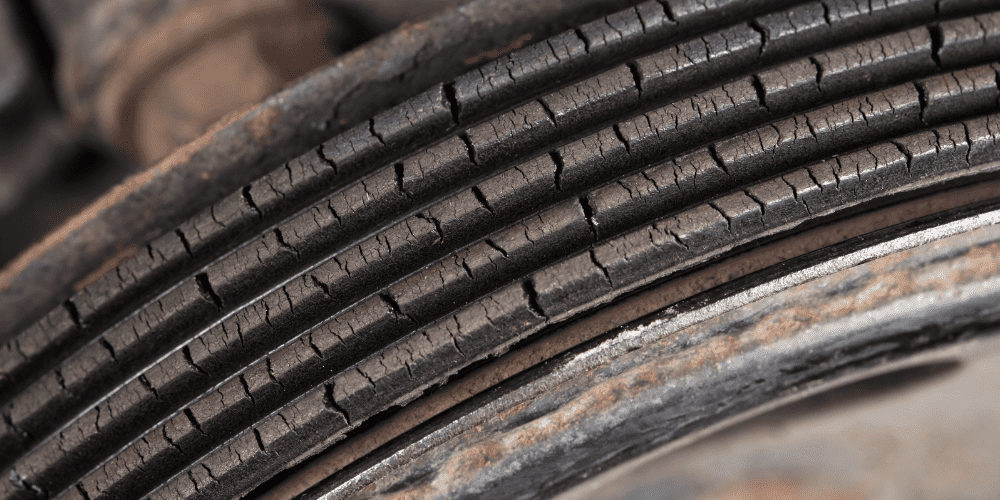
You can easily check the condition when the car is parked, and the hood is up. The belt isn’t covered and is easy to inspect.
If it looks frayed and brittle, then it might be the cause. It could also be loose. If you twist the belt more than ½ inch, it’s loose and should be tightened.
Try replicating the noise by turning on the car and putting the belt under strain. Turn on the aircon and stereo. Increase the RPM and see if you get the noise.
If you don’t and the belt looks good, you can safely assume it’s not the serpentine belt.
If it is, it’s a cheap fix compared to many car repairs.
A serpentine belt will cost between $30 and $60 and an additional $50 – $75 to fit at a car shop.
You can check the belt from above for most cars, but others require you to get under the car to be sure. Here’s a video of an inspection taking place.
A Failing Alternator High Pitched Squeal
The alternator is the last part under the hood that could make the noise.
Very briefly, the alternator is located by the side of the engine and generates the electricity your car needs when being driven.
The alternator is made up of many components. One part that is put under a lot of strain is the bearings – metal balls – which keep the rotor within the alternator running smoothly. They are encased in a ‘race’ and lubricated with grease. Either the bearings wear, or the grease starts to dry out. When this happens, they will let out a high-pitched squeal.
Here’s a DIY alternator bearing check you can do yourself.
Alternators are expensive, and if the bearings are not replaced, they can seize up. Luckily, bearings are very cheap, so if you suspect the alternator to be the cause, it would be wise to get the bearings changed rather than waiting for the alternator to break beyond repair.
If the bearings are bad, you may experience other signs the alternator is failing. Are your headlights dimmer than usual? Is the car sound system quieter? Is the climate control fan weaker?
Other alternator noises can mean different problems, however.
High Pitched Squeal From A Wheel
Seized Brake Caliper Noise
Cars have one brake caliper on each wheel. When you press the brake pedal in the cabin, hydraulic brake fluid is compressed and squeezes the brake pads on the caliper onto the rotor.
When you take your foot off the brake pedal, the caliper should release itself and the pad from your caliper.
However, as the caliper, pads, and rotors are unprotected against moisture, dirt, and temperature variations, they are prone to failing. When a caliper fails, it can get stuck in one of two positions.
If it stays in the open position, it will not press the brake pedal. You’re likely to notice poor brake performance and maybe a pull to one side when you brake on the opposite side to where the caliper is open.
If it gets stuck in the closed position, the brake pad will constantly contact the rotor. You may not notice this has happened until the pad wears right down.
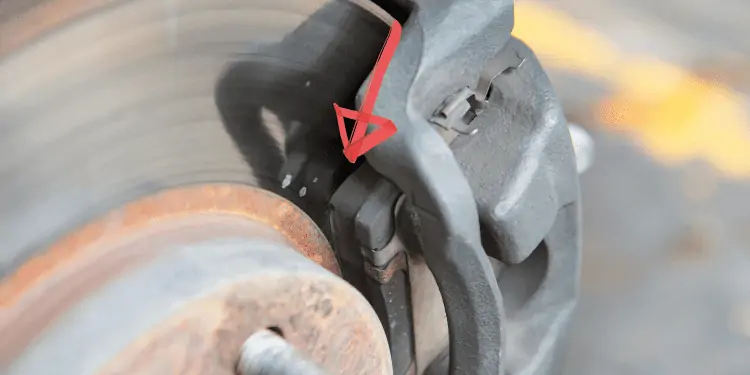
On the brake pads is a sensor – in modern cars – or a squealer. A squealer is a thin strip of metal on the pad that is exposed when the pad wears.
Once exposed, it will stay in contact with the rotor and cause a constant high-pitched noise. It won’t go away by itself.
You can do a visual check yourself. If you have hub caps, take them off – if you have rims, you can see through the alloys and look at the rotor. You are looking for a scratch that goes all the way around the circumference of the rotor. If you see it, that’s been caused by the metal squealer.
On rare occasions, a stone may have caught between the pad and the rotor and caused the same noise.
Generally, a stone will wear and then loosen and fall free through.
Worn Wheel Bearings High Pitched Squealing
Bearings are metal balls that help wheels spin smoothly in an alternator or on a car wheel.
Wheel bearings are hard-wearing. They have to be. Most car wheels rotate at least 1000 times for every mile they travel. No wonder they wear out over time. Wheel bearings are checked during a car tune up. A mechanic will hold the wheel in both hands and push and pull back and forward. Any play – movement – means the bearings are close to failing and need replacing.

If your car hasn’t been serviced recently then you can check this yourself. All you need is to jack the car an inch off the ground. One wheel at a time will do – and wiggle it back and forward.
If you’d rather not do this, you could ask a friend to listen slowly at each wheel as you drive forward slowly. Often the high-pitched squeal will be loudest at the same point at the wheel revolution, as this is where the failed bearing will be.
Wheel bearings are cheap to replace. You shouldn’t have to pay more than $30 and expect to pay an additional $100 – $150 for labor.
In Summary
It shouldn’t be too difficult to narrow down where the noise comes from. It’s going to be coming from a wheel or under the hood.
The main parts that make a high-pitched squeal when your car is moving are:
- The Serpentine belt is loose
- Bad alternator bearings
- Brake pad squealer or seized caliper
- Failing wheel bearings
The only part that can’t be checked without removing parts is the alternator bearings, but likely a squeal under the hood is more likely to be a serpentine belt.
It is very easy to check for a stuck caliper. If it’s been stuck for some time, the brake pad will be exposed to the squealer—a scratch running all the way around. A word of caution – if the squealing stops but you’ve noticed a scratch on the rotor, it could be that the squealer has fallen off or worn away. They aren’t made of strong metal and are only supposed to alert you of a potential problem. If the noise goes away, the problem caliper will still be stuck.
Wheel bearings are an easy check you can do yourself with a jack or get a fit friend to jog along with each wheel as you drive slowly. The wheel with the bad bearing will be easy to hear.



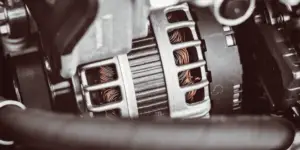
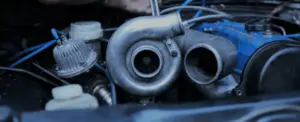
![What Does An Alternator Warning Light Mean? [ANSWERED] battery-light](https://carzaza.com/wp-content/uploads/2023/12/battery-light-300x150.png)
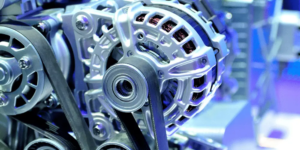
![Can Dirty Brake Fluid Cause Squeaky Brakes? [ANSWERED] DOT-3-Brake-Fluid](https://carzaza.com/wp-content/uploads/2023/12/DOT-3-Brake-Fluid-300x161.png)





